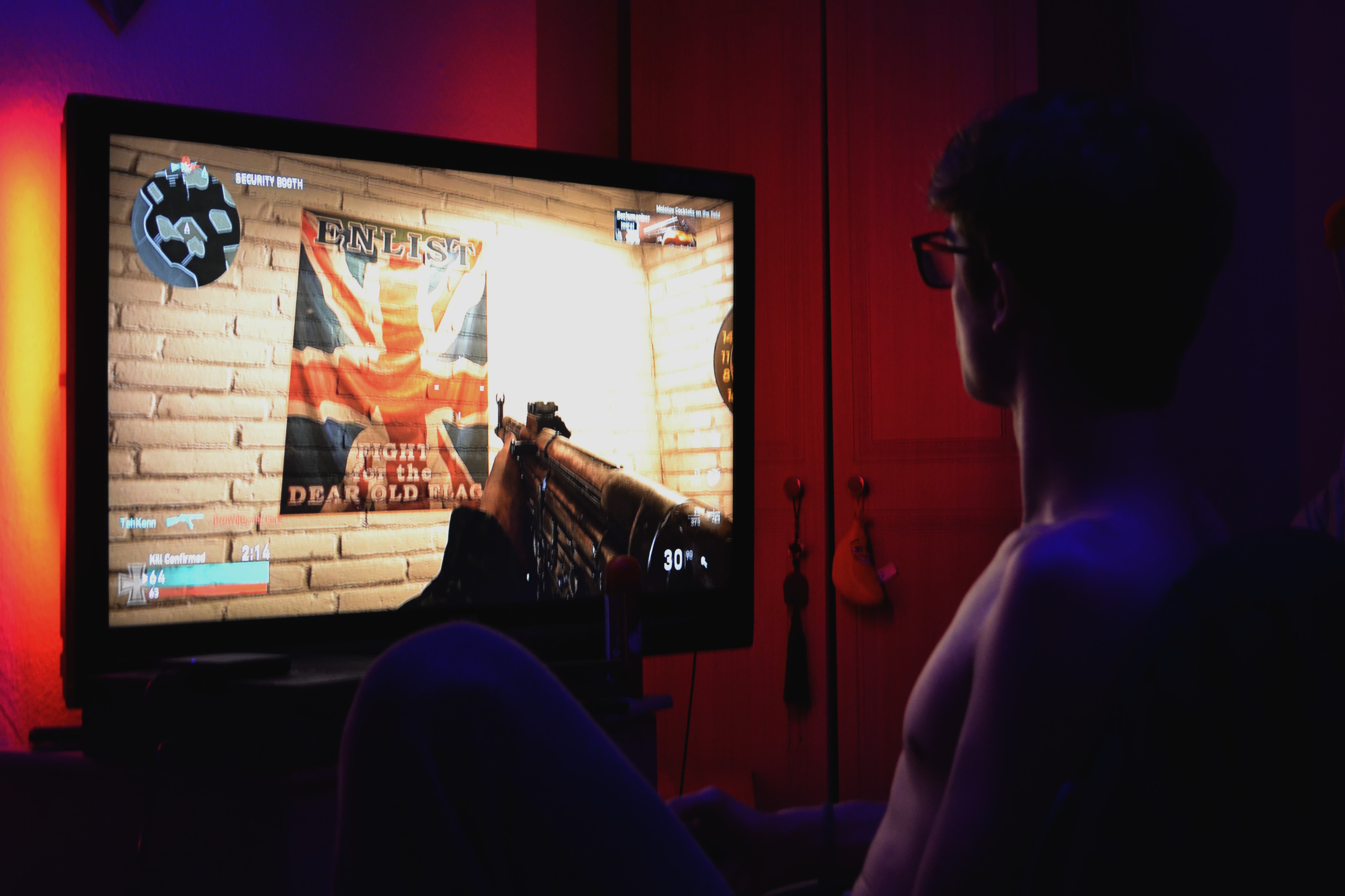In this picture, one can observe a casual image for most of our generation: a young person playing video games. More specifically, a war game where he is, by luck, on the side of the Nazis. At this point of the games he and his team are attacking an English base. The aim for him and his co-players is simply to win, no matter what side they are in and no matter what the ethical concerns created later on are.
This sounds like something one could characterize as “first world problem” but if we analyse it deeper, it really is not. In one of the new war games, players can play at the side of the Nazis. It is not their choice as they are randomly put into teams. This means, that if you are on the side of the Nazis and you win, you and your team will be satisfied by winning on the side of the ones that were objectively the “baddies. Multiple games, including this particular one have been accused for promoting violence. This time though it is different as the game was accused for promoting the Nazi ideology. The problem here of course does not lie in the game itself. It lies on the fact that our generation is having no ability to critically know what is acceptable just in the virtual world and what is acceptable in the real world.
In western societies, we want to believe that we know a lot about the WWII but truth is, most of the new generation has minor knowledge about the events and the crimes committed during it. This is the same generation that fanatically plays these types of games. We also live at times that the far right and neo Nazism are on the rise again. The social, the refugee and the financial crisis around Europe create the perfect circumstances for the rise of these groups and hate crimes as well. These type of circumstances are incredibly similar to the ones before WWII that also lead to it. Furthermore, historical and political education is not provided in detail by any educational system leading the new generation to a lack of interest in the world, society and politics. This way, the new generation is unable to see history repeating itself and the mistakes of the past occurring again at the moment.
I ask my friend what he thinks and he tells me that it is just a game. Also, for the most, playing with the Nazis is even better as they have the best equipment and the coolest uniforms. That creates many concerns. It shows that our generation is apathetic, has minor knowledge in history, does not look deeper into things but just focuses on the epiphany. When you can be a Nazi and be proud about it in a virtual reality, what stops you from being one in the real life? What are the boundaries between a fake reality and the actual one?

Commentary on Rachel Tanur's Works: US Sign